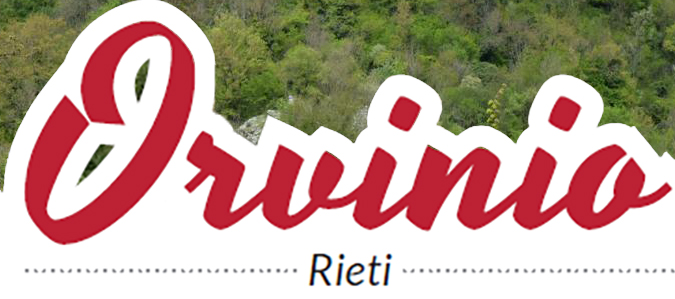Malvezzi Castle
It is thought that the Castle’s foundations are on the site of an ancient Roman temple dedicated to Minerva. The baronial palace, of late Renaissance origin, has been extensively restored. Inside, there is a private chapel with frescoes by Ascanio Manenti.
The Church of Santa Maria of the Recommended
An impressive staircase leads to the church, built in the 16th century in the form of a Latin cross. Inside, you can admire paintings and frescoes by Ascanio and his son Vincenzo Manenti who, born in 1600, was a painter who was well-known throughout the Sabina.
The Church of San Nicola
The church of San Nicola was consecrated in 1536 and rebuilt in the Baroque period. In its oval-shaped interior, one can admire frescoes and paintings from the seventeenth century, including the devoted image of the Madonna of Vallebona. This church is the place of worship of the people of Orvinio.
Church of Vallebona
Founded in the 12th century and rebuilt in the 17th century, the church of Vallebona is dedicated to the worship of Mary. It is located outside the city walls. Here, too, there are frescoes attributed to Vincenzo Manenti. Remains of the castle include parts of the building, the walls and of the ancient surrounding village. Nearby, you can see the remains of the rural church dedicated to St. John.
Church of San Giacomo
The church of San Giacomo was built in the year 1614 from a design attributed to Gian Lorenzo Bernini at the behest of the Baron Muti. Now deconsecrated, it was donated by the hereditary owners, the Tani family, to the city, which has recently completed the restoration. There are frescoes and stuccos by the famous Orvinian painter Vincenzo Manenti.
Santa Maria del Piano
The church is located two kilometers east of Orvinio, in the Muzia valley area. You can reach it by going along the road that crosses the Malvezzi farm. It is a splendid example of medieval Benedictine religious architecture. Built in the 10th century and now in a state of neglect, it nevertheless retains a timeless charm.
The St. Benedict Way
Orvinio is the 8th stage (Castel di Tora-Orvinio and Mandela-Orvinio) of the Cammino di S. Benedetto (St Benedict’s Way). It is 310 Km from Norcia- from the extension of the Sibillini Mountains, to Subiaco - in the upper valley of the Aniene, up to Cassino in the Liri valley, and crossing the most significant places in the life of St. Benedict of Norcia. St. Benedict’s Way has sixteen stages, which pass through paths, carriage roads and low-traffic roads, along the valleys and mountains of Umbria and Lazio. For more information, consult: info@camminodibenedetto.it
Naturalistic tourist itineraries
From Orvinio, through the Muzia valley, you can reach S. Maria del Piano, the Malvezzi farm, and the Castello stream, which features fresh and clear waters and juts downstream into the Turano river. Going along the provincial road that joins Orvinio and Scandriglia, with little traffic due to the rough road surface near Scandriglia, you enter the protected territory of the Parco dei Monti Lucretili. There you can admire the Sanctuary of Vallebona, after proceeding for about 3 Km, and reach the area known as Pratarelle (1000 meters above sea level), which is characterized by magnificent green meadows with fountains of pure spring water, surrounded by oaks and conifers. From Pratarelle, you reach Mount Castellano (1084) where you can see the remains of defensive walls (5th-6th century); the Cima dei Coppi (1211 meters above sea level) with their pyramidal shape. On top of Cima dei Coppi, there is a Roman temple dedicated to Giove Cacuno. The temple dominated a medieval village with an adjoining castle called "Pietra Demon,” which is completely destroyed. Finally, you can reach the quaint town of Scandriglia by following the unpaved provincial road for about 5 km.
There are opportunities for horseback riding by booking in advance.
Fauna and Flora
On the Pratarelle, from April to June, you can admire the highest concentration of wild orchids of the Lucretili Mountains (picking the orchids is forbidden). In the protected area, you can see golden eagles, hares, pheasants, wild boars, and rare reintroduced roe deers. There are also wolves, usually hidden during the day, whose howls you can hear at night.
WHAT TO SEE IN THE SURROUNDING AREA
Percile (Km 9) with its characteristic ponds |
Turano Lake (Km 25) with nautical, bathing and fishing activities |
The Sanctuary of Santa Vittoria in Monteleone Sabino (Km 24) |
The Farfa Abbey (Km 30) |
The Sanctuary of Greccio (km 55) |
Rieti (Km 41), a medieval town with Franciscan monasteries |
Tivoli (Km 37) with its characteristic Villa d’Este, Villa Gregoriana
Villa Adriana |
Cervara in Rome (Km 32) |
The Baths di Cretone (Km 50) |
The Baths of Bagni di Tivoli (Km 49) |
The Baths di Cotilia (Km 53).
“La Piazza” holiday home
Overlooking a magnificent 70 square meter terrace on the main square of Orvinio, La Piazza is a regular meeting point for cultural and gastronomic events. The recently renovated apartment on two levels includes an entrance hall with a fireplace, dining room, kitchen and bathroom with shower. On the first floor, there are two double bedrooms (air-conditioned), two single bedrooms (one of which is small) and a bathroom with shower. Wi-Fi included.
Festivals and fairs
The Confraternities of Orvinio, existing since 1600 and each with its own traditional clothes, manage the town’s numerous and popular religious processions. On the last Sunday of August, the townspeople honor their patron, St. Nicholas of Bari, with a great celebration. Other, secular, festivals are also organized during the year: The flowers of Orvinio, the art of Orvinio, The Romantic Night, and The Orviniese Carnival. Numerous festivals organized by local associations brighten Orvinio’s Sundays.
